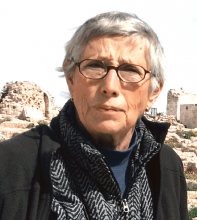You are here
‘Democracy comes second to security’
May 21,2014 - Last updated at May 21,2014
Ahead of next week’s presidential election in Egypt, former US president Jimmy Carter warned that that country’s transition to democracy “has stalled and stands on the precipice of total reversal”.
Carter was wrong because Egypt never managed to launch the transition.
The main reason for this failure is the fact that the democratic forces were — and are — too undeveloped, divided and weak to tackle the counter-revolutionary authoritarian forces.
These forces are represented by survivors of the Mubarak era: the military, the Muslim Brotherhood, and the former, now banned, ruling National Democratic Party.
The military, as represented by the Supreme Council of the Armed Forces (SCAF), took power following the ouster of president Hosni Mubarak, after 30 years in power, in 2011.
SCAF proceeded to rule in an autocratic fashion and clamped down on dissent, but went forward with constitutional amendments and elections, which gave the false impression that Egypt was on track to achieve democracy.
SCAF ignored the demands put forward by the revolutionaries for bread, freedom and social justice, and did not meet the demands of the populace for jobs, public services and security.
The Brotherhood initially sought to partner SCAF in running the country, while striving to secure power through democratic means. The Brotherhood’s bloc won nearly half the seats in the Lower House of Parliament in the 2011-12 elections and cooperated with the salafist bloc, which won 25 per cent of the seats.
The Brotherhood also won a majority of the elected seats in the 2012 election for the Upper House, the Shura Council, and its ally, the Salafist Nour Party, won a quarter of the seats.
Finally, after pledging not to field a candidate for the presidency, the Brotherhood put forward two; one was disqualified, the other, Mohamed Morsi, won and shortly after taking office retired the leading figures on the SCAF and reshuffled the military command, elevating intelligence chief Abdul Fattah Al Sisi to the top position.
Sisi was regarded as an ally by the brotherhood’s policy makers because he is devout and his family members were members of the movement.
Having taken the reins of power, the brotherhood thought it had a free hand to do what it liked and proceeded to stuff the bureaucracy and public institutions with its appointees, many inexperienced and incompetent.
The brotherhood dismissed the demands of the revolutionaries and did nothing to improve the lives of hard-pressed Egyptians.
Ultimately, they put their energies into demonstrations that culminated in the mass protests of June 30 that prompted the military to oust Morsi and form the interim government, which has followed the military’s plan for drawing up a new constitution and holding fresh presidential and parliamentary elections.
At no time was there a serious effort to initiate transition to a democratic system, although the post-uprising elections were run properly, unlike elections conducted by the Mubarak regime.
But the post-Mubarak elections were not fair because the brotherhood, Egypt’s oldest, popular and best-organised political movement, was certain to win a disproportionate number of seats, while the other veteran parties and the newly formed factions could not match the brotherhood’s political clout.
Next week’s presidential vote must be considered a popular consultation, but not a free and fair contest.
Former army chief Sisi is certain to win by a landslide against his only rival, Hamdeen Sabahi, a Nasserite with an opposition pedigree.
Opinion surveys give Sisi more than 70 per cent of the vote, while Sabahi may secure between 2 and 4 per cent. He could still garner more. He surprised many observers by taking 21.5 per cent of the vote, coming third, in the first round of the 2012 presidential election.
One of the reasons Sisi is expected to do so well is that he has the support of some of the post-uprising parties, as well as the traditional “opposition” parties like the centre-right Wafd and the leftist Tagammu and Democratic Nasserites.
Among the new parties backing Sisi are the liberal Free Egyptians Party, founded by tycoon Naguib Sawiris, the Salafist Nour Party, the Conference Party, led by former foreign minister Amr Musa, and the Tamarod (Rebel) movement that mounted the mass protests that toppled Morsi. Sisi also has the powerful backing of influential members of Mubarak’s outlawed National Democratic Party and enjoys the support of Muhammad Hassanein Heikal, the highly respected Nasserite columnist and author.
The mantle of Nasser is still a powerful psychological asset claimed by both candidates.
Sabahi has the backing of the Constitution Party, founded by former interim vice president Mohammad Al Baradei (who failed as a politician), the Nasserite Karama Party, the Egypt Freedom Party, led by liberal activist Amr Hamzawy, the Socialist Popular Alliance, the Revolutionary Socialists and the Popular Current established by Sabahi himself.
The brotherhood’s National Alliance to Support Legitimacy, the moderate fundamentalist Strong Egypt Party, and the liberal April 6 youth movement are set to boycott the poll.
The Social Democratic Party is divided, with some members defecting to the Free Egyptians Party, while other small factions have launched a campaign against Sisi.
The split among the revolutionaries is significant because it shows that those backing Sisi agree to his declared but not written platform, which promises to bring security and stability, “finish” the brotherhood and improve the lives of Egyptians within two years.
The demands put forward during the uprising have been subsumed to the drive for security at a time the country faces continuing unrest due to the ouster of the brotherhood’s Morsi last summer.
Sisi is seen as “Mr Security”. In the view of Egyptians who will vote for Sisi, steering Egypt towards the road to democracy comes second to security.













